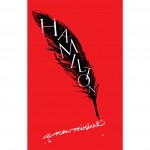I already loved A Capella Science’s “Outbound Probe” and now I’ve been dancing around to “LIGO Feel That Space,” a relyricization of “I Can’t Feel My Face” that’s about the discovery of gravitational waves.
I love nerdy fandoms, but I’m still snickering a little bit at the fact that the shirt that Colin Firth wore in Pride and Prejudice is coming to the Folger Shakespeare Library for an exhibit. But it’s worth it if only to read this suggestion for the proper way to display it.
A half-serious proposal to keep the shirt wet and molded to its display dummy by using misters like those in grocery store produce sections was deemed “curatorially unsound,” Ms. Barchas said.
I am a big sucker for unusual maps (I grew up with a Peters Projection placemat) and I really enjoyed this isochronic map that Alan Jacobs spotted. What’s an isochronic map, you ask?
This is an isochronic map – isochrones being lines joining points accessible in the same amount of time – and it tells a story about how travel was changing. You can get anywhere in the dark-pink section in the middle within five days – to the Azores in the west and the Russian city of Perm in the east. No surprises there: you’re just not going very far. Beyond that, things get a little more interesting. Within five to ten days, you can get as far as Winnipeg or the Blue Pearl of Siberia, Lake Baikal. It takes as much as 20 days to get to Tashkent, which is closer than either, or Honolulu, which is much farther away.
I’d never heard of “long eggs” so I’d never stopped to wonder how they were made, but this video of a long egg factory was mesmerizing. (Not in English, but don’t let that stop you).
Long eggs are kind of intrinsically ridiculous, but looking under the hood of even more noble ideas can still be a little amusing. The National Archives in DC is doing an exhibit on proposed constitutional amendments, and this is my favorite of the somewhat absurd ones:
Another failed proposal, in 1846, called for presidential election via a lottery system.
It called for each state to select its own presidential candidate. Then the name of each state would be written on balls equal to the number of congressmen from that state.
One ball would be picked at random, and the candidate from that state would become president. The vice president would be selected the same way.
If you wish you could pay restaurant bills in roughly this manner, there’s an app for that.
I’ve got one more “how things are made” link in the last slot, but first, Nautilus has a neat history of a virtual teapot that marked a turning point in computer graphics design.
The teapot quickly became a beloved staple of the graphics community. Teapot after teapot graced the pages and covers of computer graphics journals. “Anyone with a new idea about rendering and lighting would announce it by first trying it out on a teapot,” writes animator Tom Sito in Moving Innovation. “We saw the teapot rendered as if made of alabaster, red brick, leopard skin, and animal fur.” Most famously, a 1987 paper introduced an image casually described as the five Platonic solids plus the “newly discovered Teapotahedron.”
Did you mean to spend a half hour of your weekend watching Adam Savage build a Hellboy sword replica? Because I’m awfully glad that I did, and, to be honest, I had more fun watching this than a goodly number of tv shows.
I wound up watching on 1.25x speed, and that made Savage’s joy even more delightful.
For more Quick Takes, visit Conversion Diary!
















